How to Cook Drakes Meat in 5 Easy Steps
Table of Contents
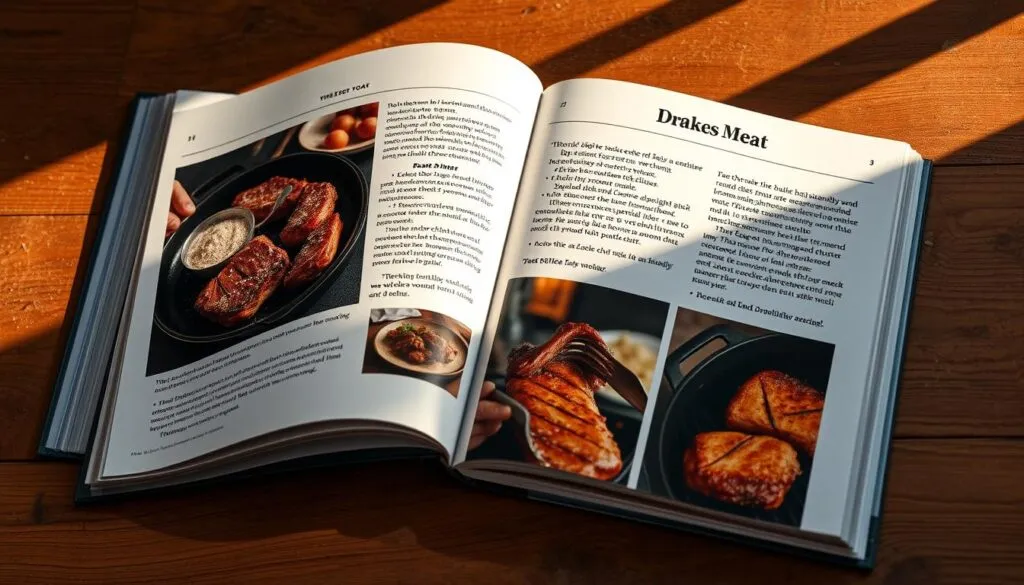
The smell of perfectly smoked meat is a big part of American cooking. I remember weekend barbecues where family and friends would wait for that first amazing bite of Drakes meat. Each step was a special tradition passed down through generations.
Whether you’re an expert at smoking meat or just starting, cooking Drakes meat is all about skill, patience, and love for great taste. This guide will help you make your meat products stand out. Every cut from your local butcher shop will become a special meal.
Key Takeaways
- Understanding proper meat preparation techniques
- Selecting the best cuts from your butcher shop
- Mastering smoking temperatures
- Achieving perfect flavor with seasoning
- Maintaining meat quality through proper storage
Understanding Drakes Meat and Its Origins
Drake meat is a special treat in the world of artisanal meats. It comes from male ducks and has a richer, more complex taste. This makes it different from regular poultry.

Drake meat is loved by chefs and food lovers for its unique qualities. It has a deeper color and more fat than chicken or turkey. This makes it juicy and full of flavor.
What Makes Drake Meat Special
Drake meat is special for many reasons:
- It tastes richer than other poultry
- It has more protein
- It’s full of B vitamins
- It’s a great source of iron and zinc
Quality Standards and Sourcing
Getting drake meat from local sources is key to its quality. Butchers and farmers’ markets offer the best cuts. They show off the unique qualities of this meat.
| Nutrient | Benefit |
|---|---|
| Protein | Muscle growth and repair |
| Vitamin B6 | Energy metabolism |
| Zinc | Immune system support |
Traditional Preparation Methods
Cooking traditions worldwide celebrate drake meat. Roasting, grilling, and slow cooking are favorite ways to cook it. These methods highlight the meat’s rich flavors, especially in French and Asian dishes.
Whether you’re cooking at home or in a professional kitchen, drake meat is a chance to try something new. It adds a special touch to your dishes.
Essential Equipment and Tools for Cooking
Preparing grass-fed beef is more than just cooking. You need a well-equipped kitchen with top-notch tools. These tools make your cooking experience better and more sustainable.
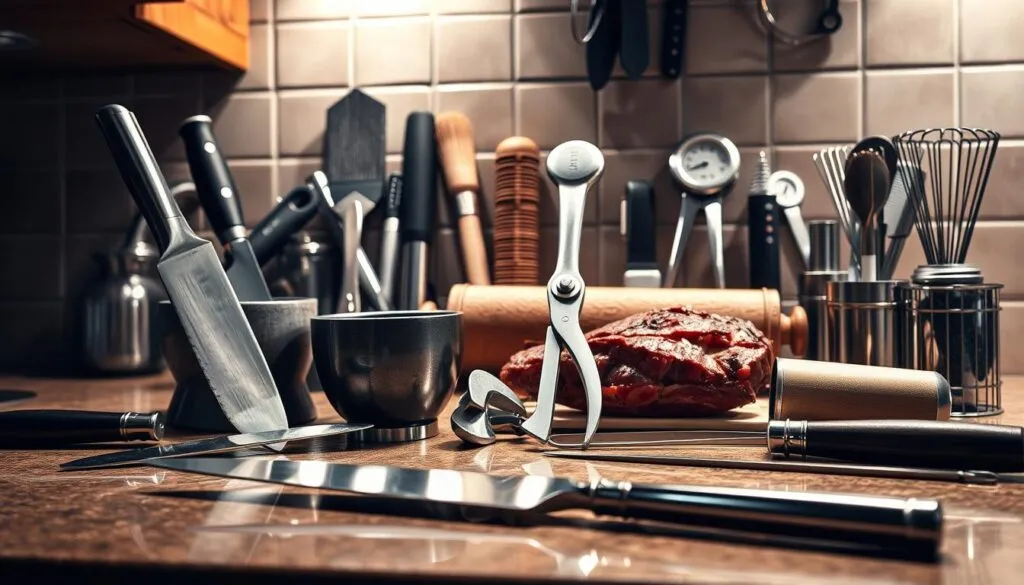
When cooking premium meat, quality tools are key. Your essential equipment should include:
- High-quality chef’s knife (8-10 inches)
- Precision meat thermometer
- Cutting boards (separate for raw and cooked foods)
- Stainless steel mixing bowls
- Reliable cooking vessels
Professional chefs suggest specific brands for the best results. Let’s look at the top tools for cooking grass-fed beef:
| Tool | Recommended Brand | Price Range |
|---|---|---|
| Chef’s Knife | MAC Professional | $145-$175 |
| Meat Thermometer | ThermoPro | $16-$21 |
| Cutting Board | Dexas Polyduo | $17 |
| Mixing Bowls | FineDine Stainless Steel | $35-$49 |
When picking tools for sustainable cooking, focus on quality and versatility. Your kitchen should have tools for precise cuts, accurate temperature control, and efficient beef preparation.
Pro tip: Invest in tools that will last and enhance your cooking experience.
Great cooking begins with the right equipment. By choosing the best tools, you’ll turn meat preparation into a true art form.
Selecting the Perfect Cut of Drakes Meat
Choosing the right heritage pork or specialty cuts can make your cooking better. It’s important to know how to pick the best meat. This will help you make dishes that taste great and impress your guests.

When looking at specialty cuts, focus on a few key things. Look at the marbling, texture, and how it looks. These things help you find meat that’s truly special.
Premium Cuts Guide
- Ribeye: Known for rich flavor and tender texture
- Tenderloin: Lean and exceptionally soft cut
- Sirloin: Balanced meat with moderate marbling
- Brisket: Perfect for slow-cooking heritage pork dishes
Marbling and Quality Indicators
Good specialty cuts have marbling that makes them taste great and tender. Look for white fat streaks all over the meat. These streaks mean the meat will taste amazing.
| Cut Quality | Marbling Score | Flavor Intensity |
|---|---|---|
| Prime | High | Exceptional |
| Choice | Moderate | Good |
| Select | Low | Mild |
Storage Requirements
Keeping your meat fresh is key. Always keep it in the fridge at 40°F or below. Use it within 3-5 days for the best taste.
- Wrap meat tightly in butcher paper or plastic wrap
- Store in the coldest part of your refrigerator
- Use airtight containers to prevent moisture loss
- Freeze cuts that won’t be used within 5 days
Preparation and Seasoning Techniques
Mastering charcuterie takes precision and creativity. Your journey starts with learning seasoning techniques that boost flavors.
Begin by picking top-notch ingredients for your seasoning mix. A dry rub can turn your meat into a masterpiece. Here’s how to do it:
- Pat the meat dry with paper towels
- Make a balanced seasoning mix
- Spread the rub evenly on all sides
- Let the meat rest to soak up flavors
Charcuterie experts suggest these seasoning amounts:
| Ingredient | Quantity | Purpose |
|---|---|---|
| Salt | 2 tbsp | Boosts natural meat flavors |
| Black Pepper | 1 tbsp | Adds a hint of heat |
| Smoked Paprika | 1 tbsp | Brings depth and complexity |
| Garlic Powder | 1 tbsp | Creates a rich aroma |
| Brown Sugar | 1 tbsp | Blends savory and sweet |
“The secret of great artisanal meats lies in patience and precise seasoning.” – Culinary Master
For maximum flavor penetration, chill your seasoned meat for at least 30 minutes. Marinating overnight can make the flavors even more intense. This turns your charcuterie into something truly special.
The Perfect Smoking Temperature Guide
Smoking meat is an art that turns simple cuts into amazing dishes. Learning the right temperature and technique can make you a BBQ pro.
Getting the perfect smoke needs precision and patience. Your smoker is like a kitchen lab where temperature is key to a great meal.
Wood Chip Selection
Choosing the right wood chips is crucial. Different woods give unique flavors to your meat.
- Hickory: Strong, bacon-like flavor perfect for beef
- Mesquite: Intense flavor ideal for bold meats
- Applewood: Subtle, sweet taste great for poultry
Temperature Control Tips
Keeping the heat steady is vital when smoking meat. Here are some tips:
- Preheat smoker to 225°F (107°C)
- Use a dual-channel thermometer for precise monitoring
- Aim for consistent temperature between 275-325°F
Timing Guidelines
| Meat Type | Smoking Time | Internal Temperature |
|---|---|---|
| Beef | 4-6 hours | 195-205°F |
| Chicken | 2-3 hours | 165°F |
Pro tip: Always let your meat rest for 20 minutes after smoking. This lets juices spread, making it more flavorful and tender.
Mastering the Art of BBQ Sauce
Making the perfect BBQ sauce is like an art that makes your Drakes Meat amazing. Using local ingredients is key to getting rich, real flavors. These flavors make your grilling even better.
Start your sauce journey with these essential techniques:
- Choose locally sourced ingredients for maximum flavor
- Experiment with sustainable farming produce for unique taste profiles
- Balance sweet, tangy, and spicy elements
Your BBQ sauce should show off regional flavors and the meat’s natural taste. Sustainable farming practices make sure every ingredient adds depth and character to your sauce. Try these flavor mixes:
- Classic Vinegar-Based Sauce
- Apple cider vinegar from local orchards
- Brown sugar from regional producers
- Locally grown chili peppers
- Molasses-Rich Bourbon Sauce
- Small-batch bourbon
- Organic molasses
- Locally harvested herbs
“A great BBQ sauce is the soul of your grilling masterpiece” – Local BBQ Chef
Pro tip: Visit local farmers markets to find unique ingredients. They can make your BBQ sauce amazing. Sustainable farming supports local agriculture and gives you the freshest, tastiest ingredients.
Side Dish Pairings and Accompaniments
Adding the right side dishes can make your BBQ unforgettable. They complement the flavors of your meat and make the meal balanced and satisfying.
Classic BBQ Sides That Shine
Traditional favorites are essential for a great BBQ. Here are some popular choices:
- Creamy Coleslaw: A crisp, tangy contrast to smoky meats
- Cornbread: Sweet and buttery perfection
- Mac and Cheese: A rich, comforting classic
- Baked Beans: Hearty and flavorful
Seasonal Vegetable Delights
Fresh, roasted vegetables can enhance your meal. Try these seasonal options:
- Roasted Brussels Sprouts: Crispy and less bitter than ever
- Honey-Glazed Carrots
- Grilled Asparagus
- Butternut Squash
Perfect Beverage Pairings
| Meat Type | Recommended Beverage |
|---|---|
| Grass-Fed Beef | Bold Red Wine or Craft Beer |
| Heritage Pork | Crisp White Wine or Bourbon |
| Mixed Grill | Craft Cocktail or Hard Cider |
Remember, balance is key. Your side dishes should complement the meat, not overpower it.
Storage and Reheating Guidelines
Storing specialty cuts right is key to keeping your Drakes meat fresh and safe. Knowing how to store it well can help it last longer and avoid food safety issues.
Here are the main tips for storing your Drakes meat:
- Refrigeration for short-term storage
- Proper freezing techniques
- Avoiding contamination risks
- Reheating best practices
For refrigeration, use airtight containers and keep your meat at 40°F or below. Raw Drakes meat should be eaten within 2-3 days. Cooked meat can last up to 4 days. Always use clean containers and separate raw meats from other foods to prevent cross-contamination.
Freezing is great for keeping meat for a long time. Wrap your Drakes meat tightly in freezer-safe packaging, removing as much air as possible. Most specialty cuts can be frozen for up to 3 months without losing much quality.
When reheating, follow these important steps to keep the flavor and prevent bacteria:
- Thaw meat in the refrigerator, never at room temperature
- Reheat to an internal temperature of 165°F
- Use a meat thermometer to ensure proper heating
- Avoid repeated reheating
Be careful of contamination risks. Microbial contamination is a big food safety worry. Look out for signs of spoilage like unusual odors, discoloration, or slimy textures. If you see these, it’s time to throw the meat away.
Troubleshooting Common Cooking Issues
Preparing charcuterie and artisanal meats can be tough, even for experts. Unexpected problems can ruin a meal. Knowing how to fix common issues helps make perfect dishes every time.
Cooking challenges are part of learning. Both pros and home cooks face issues with delicate meats.
Temperature Challenges
Temperature control is key for charcuterie. Here are strategies for managing heat:
- Use a reliable meat thermometer for accurate readings
- Create indirect heat zones on your grill
- Allow meats to rest at room temperature before cooking
- Adjust cooking times based on meat thickness
Texture Improvement Techniques
Getting the right texture needs careful prep and cooking:
- Marinate meats for 4-8 hours to enhance tenderness
- Use proper cutting techniques against the meat grain
- Rest meats for a couple of minutes after cooking
- Avoid overcooking, which can make artisanal meats tough
Flavor Enhancement Solutions
Boost your charcuterie’s flavor by solving flavor issues:
- Experiment with different wood chips for smoking
- Use high-quality seasonings
- Pair meats with complementary wine selections
- Practice balanced seasoning techniques
Pro tip: Always have patience and practice. Mastering artisanal meat preparation takes time and experience.
Conclusion
The recent hip-hop showdown between Drake and Kendrick Lamar marked a key moment in music history. Their quick exchange of six tracks in just one weekend showed how rap rivalries have evolved. This battle, with both artists nearing 40, highlighted the complex nature of modern rap feuds.
Kendrick’s “Not Like Us” topping the Billboard Hot 100 and winning five Grammys shows the feud’s cultural impact. It brought to light deeper themes like authenticity, cultural representation, and social media’s role in shaping opinions.
This conflict unveiled the intricate world of today’s hip-hop. It showed how rap feuds have moved from underground to public spectacles. The fast responses, strategic releases, and intense online engagement mark a new era of competition where art and branding blend.
As fans and critics analyze every detail, it’s clear: Drake and Kendrick have changed how we see and remember musical rivalries in the 21st century.
FAQ
What makes Drakes Meat different from other meat products?
Drakes Meat is known for its commitment to sustainable farming and local sourcing. We choose meats from grass-fed beef and heritage pork. This ensures top-notch flavor, texture, and nutrition.
Each cut comes from reputable butcher shops. They focus on animal welfare and artisanal meat production.
How do I choose the right cut of Drakes Meat?
Look for quality signs like marbling, rich color, and texture. Think about how you’ll cook it. Grass-fed beef is great for grilling, while heritage pork is perfect for roasting or smoking.
Ask your local butcher for advice. They can suggest the best cut for your recipe and taste.
What are the best storage methods for Drakes Meat?
Keep raw Drakes Meat in the coldest part of your fridge, between 32-40°F. Use or freeze it within 1-2 days. Wrap it tightly in butcher paper or vacuum-sealed bags to avoid freezer burn.
With proper storage, specialty cuts can stay good for up to 6 months in the freezer.
What equipment do I need to cook Drakes Meat?
You’ll need a good cutting board, sharp knife, meat thermometer, and reliable cooking vessel. A cast-iron skillet or smoker works well. Tongs are handy for handling.
For charcuterie, you might also need curing equipment and a temperature-controlled storage area.
How can I ensure my Drakes Meat is cooked perfectly?
Use a meat thermometer to check the internal temperature. For grass-fed beef, aim for medium-rare (135°F). Heritage pork should be 145°F with a slight pink blush.
Always let the meat rest for 5-10 minutes after cooking. This helps juices redistribute.
What are the best seasoning techniques for Drakes Meat?
Start with quality salt and freshly ground pepper. For more flavor, try dry rubs or marinades with local ingredients. Dry aging or brining can enhance the taste and tenderness of specialty cuts.
What wood chips work best for smoking Drakes Meat?
The wood chip choice depends on the meat. Hickory and oak are good for grass-fed beef. Apple or cherry wood is better for heritage pork.
Always use seasoned, food-grade wood chips. Keep the smoking temperature between 225-250°F.
How can I troubleshoot common meat cooking issues?
Common problems include uneven cooking, dryness, and lack of flavor. Use room-temperature meat and avoid overcrowding the cooking surface. Let meat rest after cooking.
For tough cuts, try slow-cooking methods like braising. Or use a charcuterie tenderizing technique.

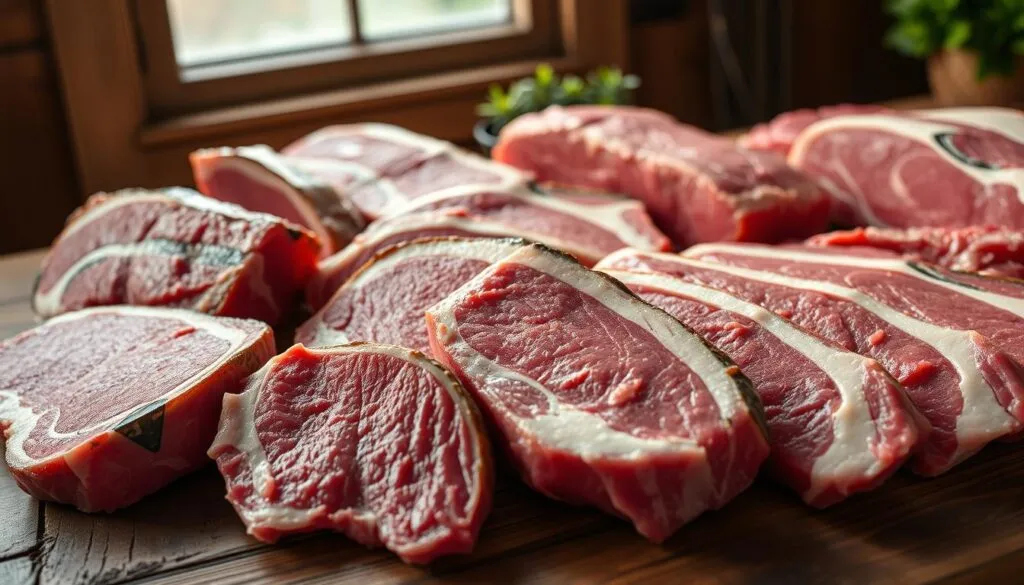
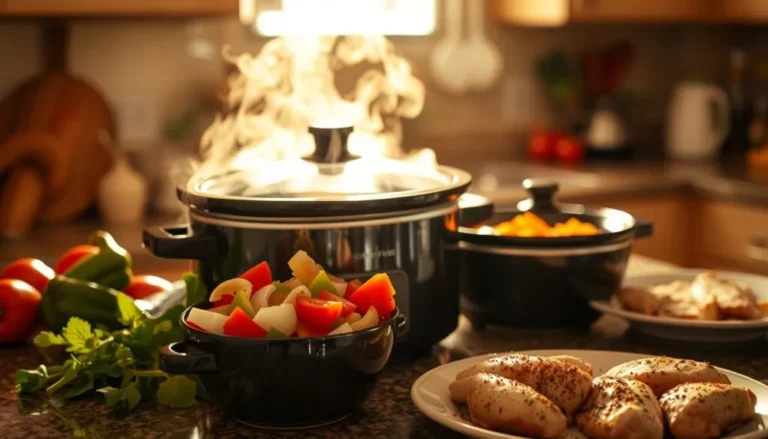
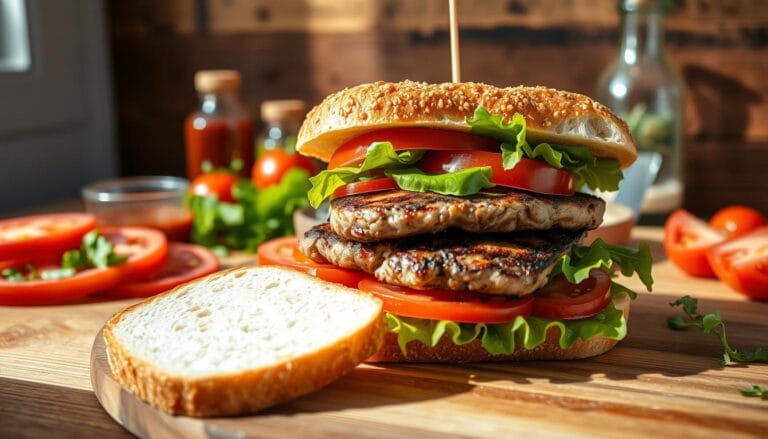
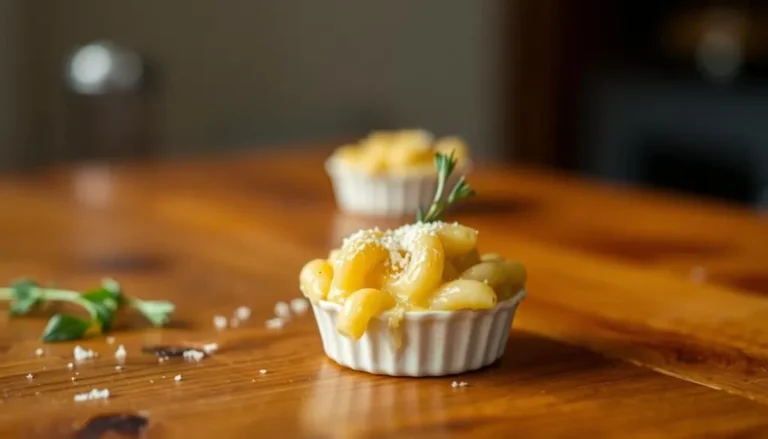
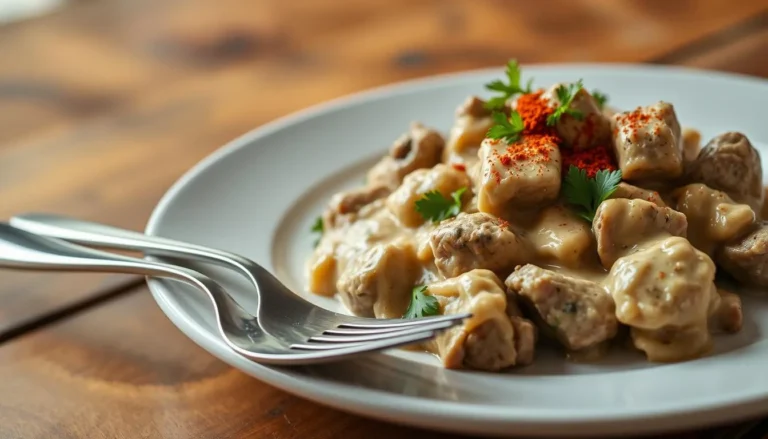
![Burger Sauce Recipe]](https://www.recipesadam.com/wp-content/uploads/2024/12/Burger-Sauce-Recipe-768x439.webp)